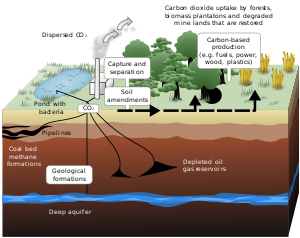Author(s): Pierre Legendre
Source: Ecology, Vol. 74, No. 6 (Sep., 1993), pp. 1659-1673
Published by: Ecological Society of America
Stable URL: http://www.jstor.org/stable/1939924
Legendre defines spatial autocorrelation as a property of random variable at a pair of locations that if are more similar then expected by random correlation, are positively autocorrelated, and if less similar are negatively autocorrelated. Spatial autocorrelation is general property of ecological variables.
Monday, September 20, 2010
Notes on Writing Papers and Theses - Ken Lertzman
Ken Lertzman
Bulletin of the Ecological Society of America, Vol. 76, No. 2 (Jun., 1995), pp. 86-90
Published by: Ecological Society of America
Stable URL: http://www.jstor.org/stable/20167913
Dr. Lertzman outlines common problems that he has found in scientific writing from his students. These problems give you insight into what someone who has reviewed many these, papers, and articles has found as common problems. He offers 21 notes to keep in mind when writing.
1) Know your audience - You must adopt a style and level of writing appropriate for your audience.
- Scientific writing is not "general purpose" and should not be tailored to be understood by everyone.
- For class papers your audience is your professor. I would extend it to the other people in your graduate seminar.
- For Journals it will be the people who read the journal. (ie Geomorphology would be read by geomorphologists.)
Think about it, you want them to use your time together to make progress with you in your research. Use someone else to fix grammer and spelling.
3) Don't turn in your first draft
I was surprised that he even had this in here. However he did say one thing that stuck with me: "Good writing is rewriting." So I understood this section is that you need to rework your writing over and over. That is how excellent writing emerges.
4) Get and use style books
5) Avoid passive constructions when possible.
Avoid passive voice. It is unclear. It is better to use a personal pronoun then to use the passive.
6) Avoid abusing word forms
Sunday, September 19, 2010
The Columbian Encounter and the Little Ice Age: Abrupt Land Use Change, Fire, and Greenhouse Forcing
 Image via WikipediaThe Little Ice Age, a period of global cooling that occurred between 1500 and 1750, has been the subject of much scientific debate about what roles do people play in global climate change, and if natural variation has been the source of past warming and cooling periods. The Little Ice Age has been previously attributed exclusively to natural variations through mechanisms like decrease in solar irradiance (the amount of sunlight which reaches the Earth), increase in global volcanic activity, and changes in ocean circulations. The current article "The Columbian Encounter and the Little Ice Age: Abrupt Land Use Change, Fire, and Greenhouse Forcing" by Robert Dull and other leading researchers argue that anthropogenic causes played a larger role then once anticipated. They conclude that the rapid population crash of indigenous people of the new world after the Columbian Encounter lead to a reforestation of the Neotropics creating a terrestrial biospheric carbon sequestration in the order of 2 to 5 billion tons. A carbon sequestration event of this magnitude would be a significant forcing mechanism for global cooling during the Little Ice Age period. Dull et al. reviewed fire history and reported high-resolution charcoal records to support the idea that the Neotropical lowlands went from being a net source of carbon dioxide to a net sink in the centuries following the Columbian encounters. This article furthers the concept of anthropogenic forcing of climate before the Industral Revolution, and shows that people have a longer history on global climate change.
Image via WikipediaThe Little Ice Age, a period of global cooling that occurred between 1500 and 1750, has been the subject of much scientific debate about what roles do people play in global climate change, and if natural variation has been the source of past warming and cooling periods. The Little Ice Age has been previously attributed exclusively to natural variations through mechanisms like decrease in solar irradiance (the amount of sunlight which reaches the Earth), increase in global volcanic activity, and changes in ocean circulations. The current article "The Columbian Encounter and the Little Ice Age: Abrupt Land Use Change, Fire, and Greenhouse Forcing" by Robert Dull and other leading researchers argue that anthropogenic causes played a larger role then once anticipated. They conclude that the rapid population crash of indigenous people of the new world after the Columbian Encounter lead to a reforestation of the Neotropics creating a terrestrial biospheric carbon sequestration in the order of 2 to 5 billion tons. A carbon sequestration event of this magnitude would be a significant forcing mechanism for global cooling during the Little Ice Age period. Dull et al. reviewed fire history and reported high-resolution charcoal records to support the idea that the Neotropical lowlands went from being a net source of carbon dioxide to a net sink in the centuries following the Columbian encounters. This article furthers the concept of anthropogenic forcing of climate before the Industral Revolution, and shows that people have a longer history on global climate change.The Columbian Encounter and the Little Ice Age:Abrupt Land Use Change, Fire, and Greenhouse Forcing is avilable in the Annuals of the Assocation of American Geographers Special Issue on Climate Change October 2010
Dull, Robert A. , Nevle, Richard J. , Woods, William I. , Bird, Dennis K. , Avnery, Shiri and Denevan, William M.(2010) 'The Columbian Encounter and the Little Ice Age: Abrupt Land Use Change, Fire, and Greenhouse Forcing', Annals of the Association of American Geographers,, First published on: 01 September 2010 (iFirst)
http://dx.doi.org/10.1080/00045608.2010.502432
Robert A. Dull's UT Faculty Profile

Subscribe to:
Posts (Atom)
